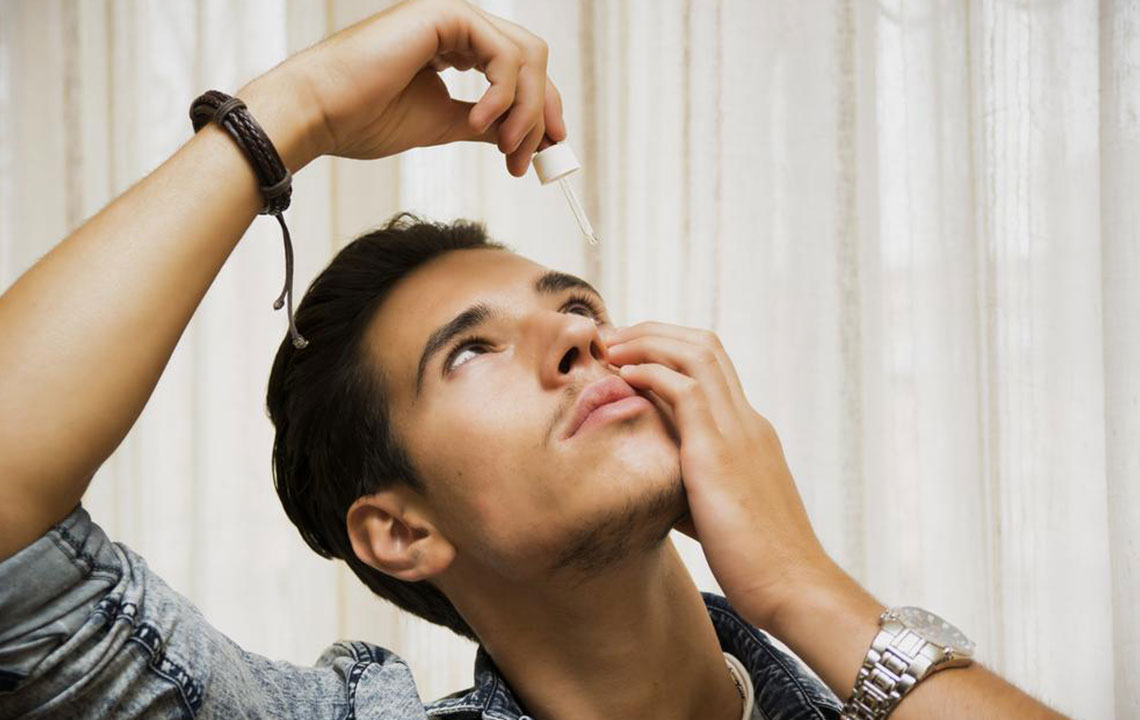Common Eye Diseases and Their Symptoms

The human eye is a complex organ. The affliction of any eye disease can lead to temporary or permanent loss of vision. This delicate organ, which is our window to the world, needs to be well taken care of. In case of an eye infection or disease, it is best to consult an eye doctor and undergo a treatment following the diagnosis, to regain eye health.
From minor itching in the eyes due to an allergy which can cause redness to more serious glaucoma and cataract, the eyes are susceptible to a number of infections. Eye diseases symptoms manifest in various forms. While some cause mucus discharge from the eyes, a few others can lead to partial vision loss. If you are experiencing any eye diseases’ symptoms, which do not subside in a short period, it is imperative that you consult an ophthalmologist as soon as possible.
Here are some of the common eye diseases and their symptoms that are encountered by people.
Cataract
Cataract can form in one or both the eyes. When you’re suffering from cataract, your vision is blurred. You also tend to notice a glare or a halo surrounding the light source during night time. Cataract develops slowly and does not cause any pain or redness. Normally, cataract surgery is performed to help restore clear vision.
Glaucoma
Increased pressure within the eyeball can damage the optic nerves, and this condition is known as glaucoma. Blocked blood vessels, eye injury and inflammatory disorders can cause glaucoma. It does not develop any eye disease symptoms such as pain. Hence, a regular eye examination will help detect this condition at the earliest.
Conjunctivitis
Also referred to as ‘pink eye’, it is caused by inflammation of the conjunctiva. This infection is characterised by redness, itching, discharge (pus or mucus), and burning. There is a feeling like a foreign particle is in the eye. Bacterial conjunctivitis is highly contagious and can easily spread through hand-to-eye contact. Isolation and antibiotic eye drops help contain and clear the infection.
Corneal diseases
Being the outermost part of the eye, the cornea is more prone to injury, infection and exposure to toxins, and any of these can lead to corneal damage. The corneal eye diseases’ symptoms include pain in the eyes, redness, watery eyes, and reduced vision. New eyeglasses and medicated eye drops are recommended to treat this condition. In case of corneal tear, a surgery might be required.
Eyelid problems
The eyelids protect the eyes and limit the quantum of light exposure. They spread moisture over the eyes, thus keeping the eyes well lubricated. The symptoms of eyelid problems include itching, pain, sensitivity to light and tearing. Few people experience blinking spasms or inflammation along the outer edge of the eye, near the eyelashes.
Retinal disorders
The retina is a vital part of the eye which converts the light rays into impulses that travel through optic nerve to our brain, where they are intercepted as images. In retinal disorders, the transfer of images is blocked. Diabetic retinopathy is a form of retinal disorder in which the blood vessels in the eyes are damaged. Macular degeneration is an age-related condition in which the macula, a portion of the retina, suffers damage.
In a medical emergency, the retina is pulled away from the back of the eye which affects the vision quality. This condition is called Retinal detachment. Laser procedures help in correcting this condition.
Dry eyes
Dry eyes is a condition caused due to an insufficiency of tears. The tears function as lubricating liquids to keep the eyes moisturised. You experience burning, itching or soreness in the eyes along with a feeling of having something in the eye(s). In severe cases, when the dry eye condition is not treated in time, it results in loss of vision.
Staying in a dry environment for long hours, long hours of exposure to brightly lit computer screens, and hyperactive tear ducts are some of the major causes of dry eyes.
Floaters
Floaters are tiny specks that float in your field of vision when you’re inside a well-lit room or outdoors on a bright day. Generally considered normal, the presence of floaters can also suggest a serious underlying problem like retinal detachment. If you notice a change in floaters in your vision, or a dark shadow appears in your peripheral vision, you must get to a doctor as soon as possible.
Uveitis
The uvea is the middle layer of the eye that contains vital blood vessels. Uveitis is a condition caused by inflammation of the uvea. The eye disease symptoms include eye pain, blurred vision, redness in the eye, and sensitivity to light. Uveitis can damage eye tissues and lead to vision loss.
The eyes are our vital sense organs that are prone to a number of infections. In case you experience any sort of discomfort in the eye, be it pain, redness or itching which does not subside in a few days, a visit to an eye specialist is a must to diagnose the condition and undergo appropriate treatment.


